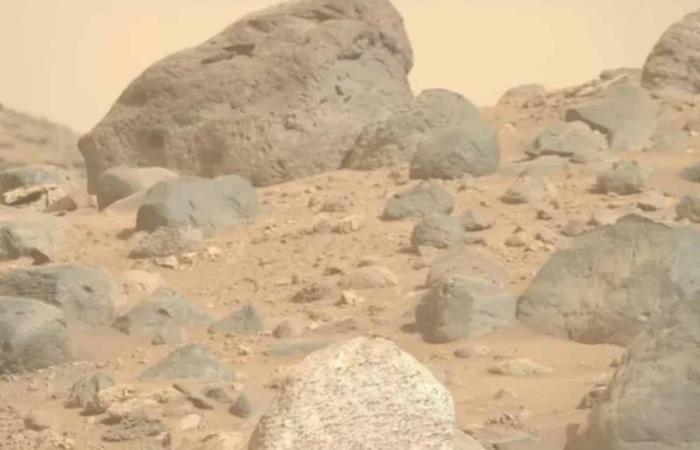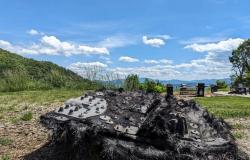
If when looking at this image of Mars you feel a deja vu from the nursery rhyme “One of these things is not like the rest,” you are not alone. NASA scientists have also experienced that feeling recently.
He Perseverance rover, a mobile laboratory the size of a car, arrived last week in Neretva Vallis, a region of the Red Planet that, although today it looks like a barren desert, billions of years ago was a river channel that flowed into the Jezero Crater. During its journey along this ancient channel, Perseverance encountered a hill full of rocks. One of them especially caught the attention of the scientific team: a stone speckled with light that stood out among a sea of dark formations.
“Every once in a while, something unusual in the Martian landscape catches our attention, and the team says, ‘Let’s investigate it,'” said Katie Stack Morgan, NASA’s Mars 2020 deputy project scientist. “This rock was the perfect example of something that deserves investigation, because it shone brightly and was a very striking white color.”
The rock in question is so extraordinary that the scientists They have classified it as the only one of its kind on Mars. Detailed analysis with the rover’s instruments suggests it could be anorthosite, a type of rock that has never been detected on Mars before, according to Stack Morgan. Although the possible existence of these rocks on Mars had been theorized, not even the Curiosity rover, which has explored a wide variety of terrain in Gale Crater, had found a similar sample.
This rock is unique on Mars and scientists continue to study it
Anorthosites are most common on the Moon and in certain mountain ranges on Earth, but are considered rare in the solar system. Until now, no concrete evidence of anorthosites had been found on Mars, not even among the Martian meteorites that have reached Earth.
This finding on Mars could have important implications for our understanding of the early crust of Mars, suggesting that it may have been more complex than previously thought and similar to Earth’s original crust. Understanding the ancient Martian crust could also provide clues about the evolution of our own planet and the emergence of life.
The team of Perseverance He named the special rock on Mars, about 45 centimeters wide and 35 centimeters high, “Atoco Point,” after a landmark in the Grand Canyon. “Seeing a rock like Atoco Point is an indication that yes, we have anorthosites on Mars, and this could be a sample of that lower crust material,” Stack Morgan explained. “If we find more examples in the context of other rocks, we could get a clearer view of how the first crust of Mars formed.”
Anorthosites are predominantly composed of feldspar, a mineral related to lava flows. Feldspars are richer in silica than basalts and crystallize in the later stages of magma cooling. In contrast, basalts, dark volcanic rocks rich in iron and magnesium, are common on the surface of Mars.
Many scientists of the Perseverance team believe that subsurface magma produced the minerals at Atoco Point and that a giant impact on Mars may have brought this rock to the surface, and that a fragment subsequently fell from the crater rim to its current location. Others think the rock may have formed in a distant location and been transported by an ancient river to its current position.
Whether scientists will ever be able to analyze this rock or a similar one on Earth remains to be seen. Since 2021, Perseverance has been collecting samples from Jezero Crater, a region that once housed a dry delta where microscopic organisms are believed to have existed. However, the ambitious plan to send these samples to Earth, a mission known as Mars Sample Return, is in jeopardy due to its rising cost, which has led to layoffs and cancellation warnings from Congress. NASA is desperately looking for solutions to save the Mars mission.
It may be surprising that the rover team decided not to take a sample from Atoco Point despite its importance. This is because they expect to find many more similar samples in the coming months, when the rover reaches the edge of the crater. Finding examples in their original context could provide scientists with valuable information.
“We decided to keep this rock in mind,” Stack Morgan said. “‘Maybe we’ll come back here if we don’t find something similar on the crater rim.'”





